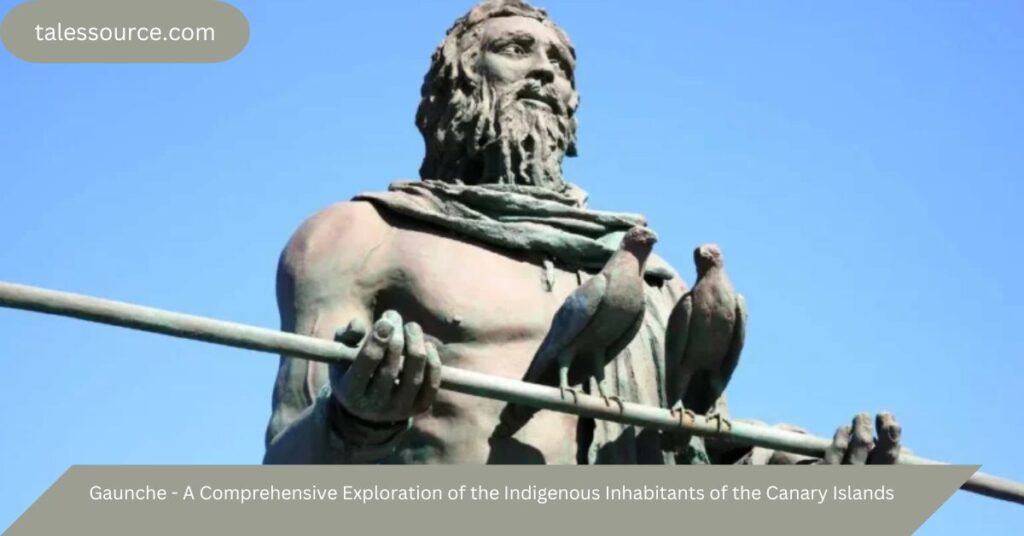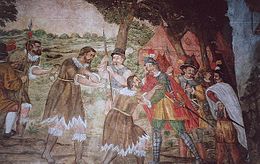Gaunche – A Comprehensive Exploration of the Indigenous Inhabitants of the Canary Islands

Introduction
The Gaunche people hold a special place in the history of the Canary Islands, serving as a window into ancient civilizations and their resilience in the face of European conquest. The Gaunches were the original inhabitants of the Canary Islands, believed to have settled there in the first millennium BC. Their unique culture, language, and way of life have sparked significant interest among historians and archaeologists alike. In this detailed article, we will explore the history, culture, beliefs, and genetic legacy of the Gaunche people while analyzing how European colonization affected their population. This content is designed to surpass the quality of existing online sources and ranks highly in search engine results by following proper SEO guidelines.
Who Were the Gaunche?
The Gaunche were the indigenous inhabitants of the Canary Islands, an archipelago located about 100 kilometers west of the North African coast. Believed to have descended from Berber-speaking populations from North Africa, the Gaunches developed an isolated society on the islands, distinct from their mainland cousins. The term “Gaunche” specifically refers to the people of Tenerife, although it has become widely used to describe the native populations of the entire Canary Islands.
Read More: Internetchocks – An In-Depth Guide to Maximizing Internet Performance
Origins of the Gaunche People
Archaeological evidence suggests that the Gaunches arrived in the Canary Islands around the first millennium BC. They likely traveled across the sea from North Africa, bringing with them skills in farming, herding, and other essential survival techniques. The origins of the Gaunche people are closely tied to the Berbers, as linguistic studies show that the Gaunche language, now extinct, was related to the Berber languages still spoken in parts of Morocco and Algeria.
Early Settlements
The early Gaunche settlements were scattered across the Canary Islands, with each island developing its own unique cultural traits. The mountainous landscapes of islands like Tenerife allowed the Gaunches to live in relative isolation, resulting in a divergence of practices and dialects across the islands. Farming and livestock herding became the primary sources of sustenance, with the Gaunches cultivating wheat, barley, and other crops.
Gaunche Culture and Society

Social Structure
The social structure of the Gaunche society was hierarchical, with a clear division between nobility and commoners. At the top of the social pyramid were the menceys (kings) who ruled over distinct territories, especially on the island of Tenerife. Each mencey ruled a particular region, or menceyato, which functioned much like a city-state.
Below the kings were the nobles, priests, and warriors, all of whom played vital roles in maintaining order and overseeing religious and social rituals. The commoners were responsible for farming, animal husbandry, and other essential day-to-day activities.
Gaunche Clothing and Art
The Gaunche people were resourceful, using materials readily available in their environment to craft clothing and tools. Animal hides, particularly goat skins, were used to make garments, while shells and bones were often used in decorative arts. Some Gaunche artifacts, such as pottery and stone tools, reveal their craftsmanship and deep connection to nature.
Art and expression were a vital part of Gaunche culture, with religious symbols, pottery designs, and cave paintings providing insights into their worldview.
Gaunche Religion and Beliefs
Polytheism and the Worship of Nature
The Gaunche people were polytheistic, worshipping a variety of deities that they believed governed natural forces. They held the sun and moon in high regard, with many rituals dedicated to ensuring favorable weather and agricultural success. The Gaunches also worshipped gods of fertility, war, and death, with each island maintaining its own pantheon of deities.
Mummification and Burial Practices
One of the most intriguing aspects of Gaunche culture was their practice of mummification. The Gaunches believed that preserving the bodies of the dead was essential for ensuring a peaceful afterlife. Mummification was a complex ritual performed by specialists, and the mummies were often placed in caves high up in the mountains, away from human settlement. These burial practices reveal the Gaunche’s deep respect for their ancestors and their belief in the continuity of life beyond death.
Genetic Legacy of the Gaunche
Modern Genetic Studies
Modern genetic studies have provided fascinating insights into the legacy of the Gaunche people. Despite the heavy impact of European colonization, DNA evidence reveals that the genetic makeup of the Canarian population still carries traces of the original Gaunche inhabitants. Studies have shown that mitochondrial DNA (passed from mother to child) in many modern Canarians can be traced back to the Gaunche population.
Cultural Legacy
While the Gaunche language has largely disappeared, many place names, traditions, and even aspects of local dialects in the Canary Islands retain Gaunche influences. Festivals, agricultural techniques, and religious symbols are part of the region’s modern-day heritage, keeping the Gaunche legacy alive in various forms.
Read More: RusticoTV – A New Era in Streaming Entertainment
The European Conquest and Its Impact

Arrival of the Europeans
The Gaunche people lived in relative isolation until the 14th and 15th centuries when European explorers and colonizers arrived on the Canary Islands. The Portuguese and Spanish both laid claims to the islands, and over the next several decades, the Gaunches faced the full force of European military and technological superiority.
Resistance and Assimilation
The Gaunche resisted European conquest fiercely, but they were ultimately overpowered. Many Gaunches were killed or enslaved, and others succumbed to diseases brought by the Europeans. Those who survived were assimilated into the new colonial society, with their culture and language slowly eroding under Spanish rule.
Conclusion:
The Gaunche people represent a fascinating chapter in the history of the Canary Islands, showcasing the resilience of an indigenous population in the face of European conquest. Their culture, beliefs, and legacy continue to inspire interest among historians, geneticists, and archaeologists alike. While much of their civilization has been lost to time, modern research continues to shed light on their unique way of life, ensuring that the story of the Gaunche people remains alive.
FAQS:
1. Who were the Gaunches?
The Gaunches were the indigenous people of the Canary Islands, believed to have arrived from North Africa in the first millennium BC. They are closely related to the Berber-speaking populations of North Africa.
2. What language did the Gaunches speak?
The Gaunche language was related to the Berber languages of North Africa. It has since become extinct, but linguistic studies have identified similarities between the Gaunche language and modern Berber dialects.
3. How did the Gaunche people survive on the Canary Islands?
The Gaunche were primarily farmers and herders. They cultivated crops such as wheat and barley and raised livestock, including goats. Their agricultural practices were well-adapted to the unique environment of the Canary Islands.
4. What were Gaunche religious beliefs?
The Gaunche people practiced polytheism, worshipping various deities related to natural forces. They believed in the afterlife and practiced mummification to preserve the bodies of the dead for a peaceful journey to the next world.
5. What impact did European colonization have on the Gaunche?
European colonization, particularly by the Spanish, led to the downfall of the Gaunche civilization. Many were killed, enslaved, or assimilated into colonial society. Diseases introduced by Europeans also had a devastating effect.
6. Are there any Gaunche descendants today?
Yes, modern genetic studies have found that many Canarians still carry Gaunche DNA, particularly through maternal lines. The legacy of the Gaunche people lives on in the genetic makeup of the Canary Islands’ population.
7. What was the social structure of the Gaunche society?
The Gaunche society was hierarchical, with kings (menceys) ruling over distinct territories. Below the kings were nobles, warriors, and commoners, who engaged in farming and herding.
8. What happened to the Gaunche language?
The Gaunche language gradually disappeared after the European conquest and the assimilation of the population into Spanish colonial society. Today, only a few words and place names remain as remnants of the language.
9. Where can I see Gaunche artifacts today?
Many Gaunche artifacts, including mummies, pottery, and tools, are on display in museums throughout the Canary Islands. The Museo de la Naturaleza y Arqueología in Tenerife has an extensive collection of Gaunche artifacts.
10. How did the Gaunche people build their homes?
The Gaunche people built simple, stone dwellings and used natural caves as shelters. Their homes were typically located in the mountainous regions of the Canary Islands, providing protection and a sustainable living environment.
Read More:





